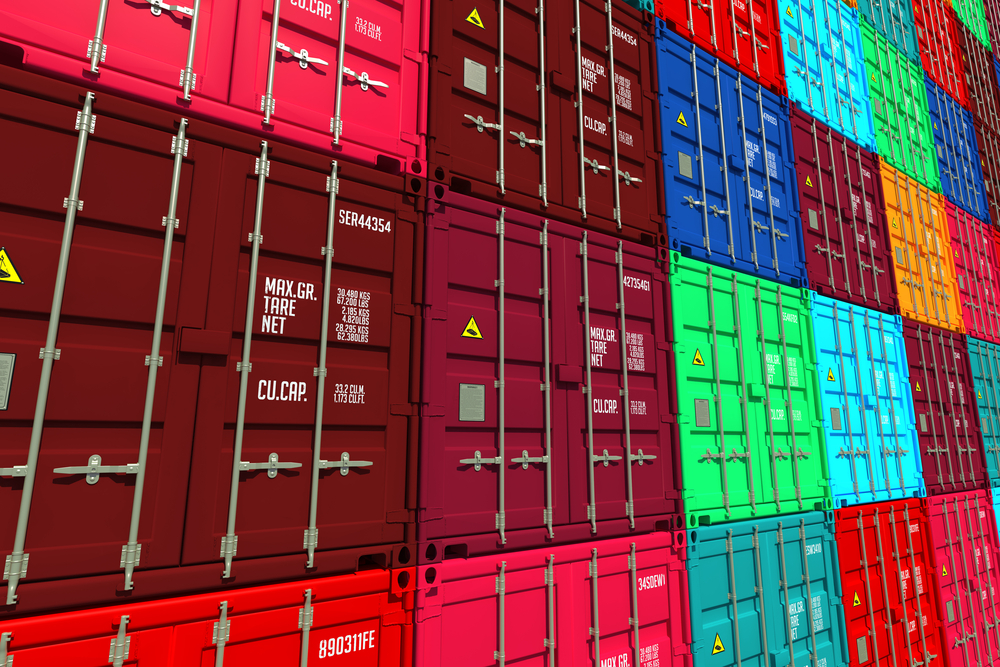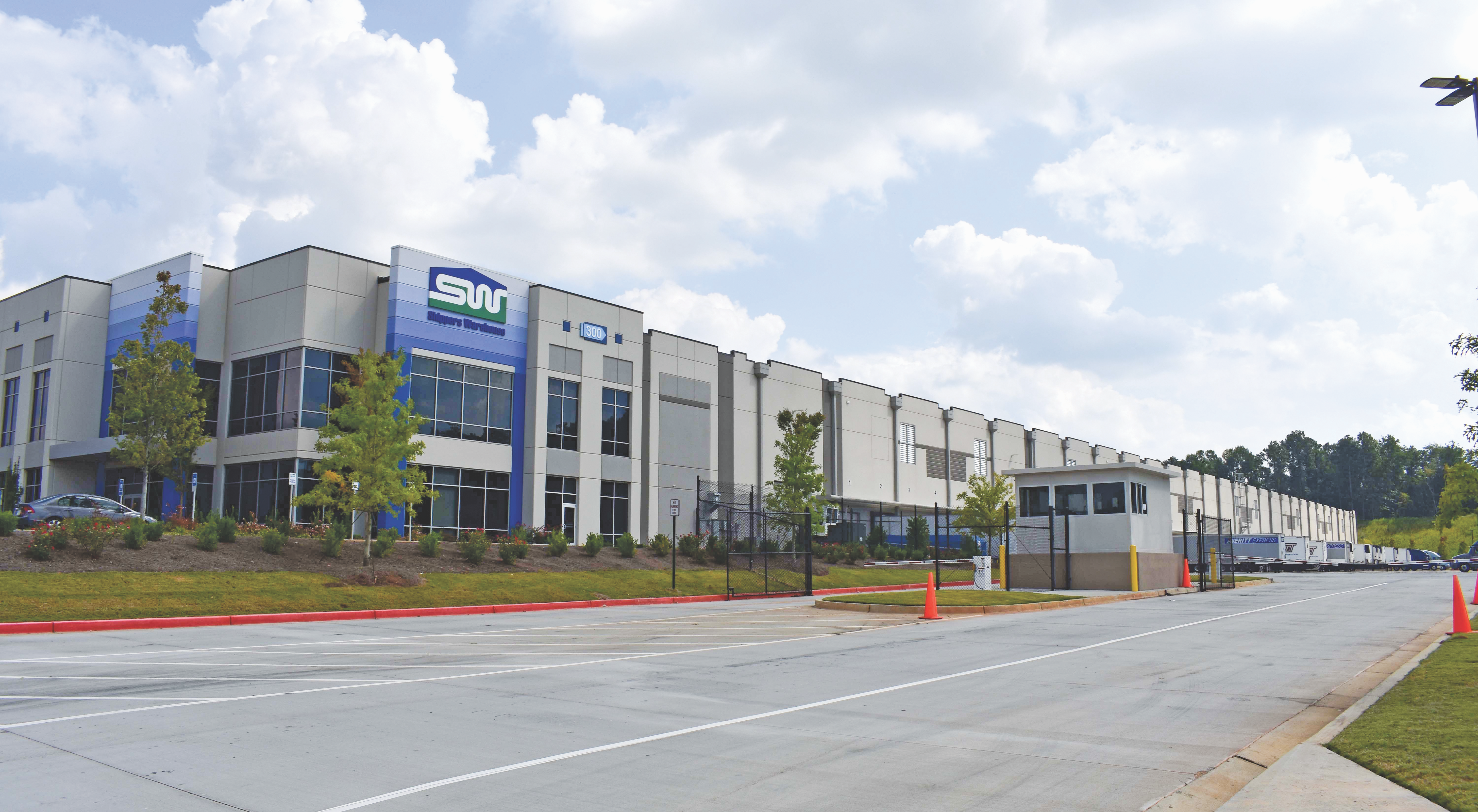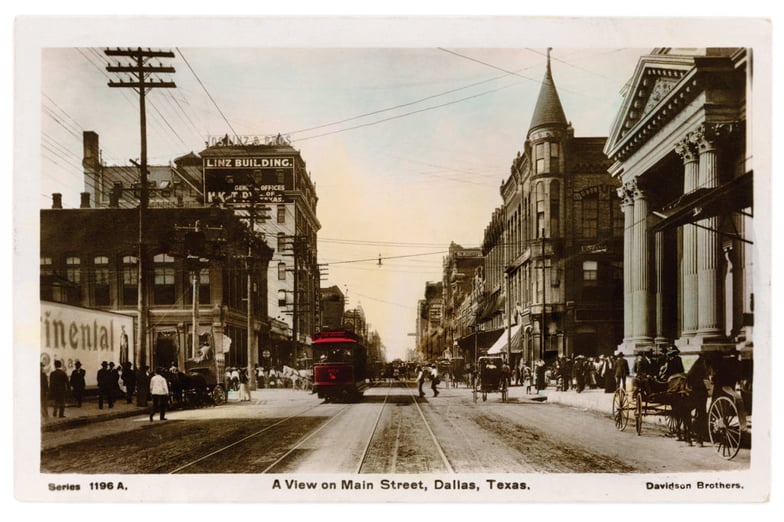Evolution of 3PL, Innovation & Supply Chain
At the beginning of the 20th century, the average annual wage was $432, a postage stamp was $.02, and the cost of 5 pound bag of flour was $.12. So much has changed in 120 years, including how we purchase goods and how they get to our homes. Warehousing, Transportation, and Inventory Management have undergone dramatic transformation in the past century. In this article, we explore the evolution of an industry and The Shippers Group.
Image Credit: dmagazine.com
1900
When Shippers Warehouse was founded in 1901, warehousing existed mainly for commodities storage, and the grocery distribution industry was still decades away. Food distribution was handled by small local farmers through the 1940’s. Chain stores and supermarkets emerged and grew quickly in the years between 1910 and 1960, but it wasn’t until the 1960’s that we saw the growth of grocery warehousing and food distribution centers.
Logistics is a phrase coined by the English military in the mid-1800’s, but its importance was not widely understood until World War II in the 1940's. It was post-war that logistics became a scientific study for the flow of goods, and in the 1960’s manufacturers began to more commonly outsource logistics services. It was during this time that Shippers Warehouse transformed, and soon became the premier third-party grocery warehousing and transportation company in Texas and throughout the southern region of the U.S. by the early 1980’s.

1950
As consumers demanded mass-produced goods in the 1950’s and 1960’s, manufacturers began to better understand the importance of managing logistics functions. In the 1960’s the National Council of Physical Distribution Management was started as an educational association dedicated to the integration of warehousing, transportation, and inventory management. Together, these functions were referred to as physical distribution. As the industry evolved, so did the organization which changed their name in the mid- 1980’s to the Council of Logistics Management (CLM). It was about this time that supply chain management began to emerge as a discipline that not only included warehousing, transportation, and inventory; but it also included procurement, manufacturing operations, and sales & marketing functions. In 2005, CLM became known as CSCMP—Council of Supply Chain Management Professionals—dedicated to the advancement and dissemination of research and knowledge of supply chain management. Membership today spans 67 countries and serves 8,500 members.
During those pivotal years of the 1960’s and 1970’s, several advances in technology began to take shape. In the 1970’s we saw the rise of computers and by the mid-1970’s JC Penney launched one of the first real Warehouse Management Systems. These advances provided companies with reports of warehouse inventory levels and later in the decade helped create automated storage and retrieval systems.

1980
By 1980, Electronic Data Interchange (EDI) was in the early stages and by 1985 was the hot topic at CLM’s annual conference. Shippers Warehouse was on board to share commercial transactions for order transmittal, shipment notices, status updates and more. EDI brought forth a new way to communicate with customers and carriers and it was a tool for improving efficiency within warehouse operations while integrating supply chain partners.
In fact, it was in the early to mid 1980's when Supply Chain Management as a discipline gained momentum among manufacturers. Although they had already been doing so for some time, the focus was primarily on logistics functions of warehousing and transportation segmented by raw materials and finished goods. Companies began looking for new ways to optimize their networks, including suppliers and customers, to improve speed and reduce costs by integrating goods movement of both raw materials and finished goods. Supply Chain Management evolved as consumer goods production increased in China and other countries increasing the amount of goods imported to the U.S., which also resulted in the growth of ocean freight, cargo liners, air-freight and intermodal carriage.
In the late 1980's and early 1990's, bar code scanning began in the retail and warehousing industries and warehouse management systems were becoming more sophisticated. The internet made real-time information mainstream, and warehouse customers demanded it. Web portals for information such as order, inventory, and delivery status became commonplace. Bar code scanning in the warehouse was pivotal for put-away, picking, and inventory management functions in the warehouse. Shippers Warehouse was evolving too. The company used real-time information to become well-known for their freight consolidation program, which combined warehouse customers' LTL orders into truckloads that provided customers with on-time deliveries and freight savings to the grocery industry.

2000
Amazon and Apple helped revolutionize how we shop. Amazon had already begun selling books online in the mid 1990's, and the 2007 introduction of the Apple iPhone helped make purchasing goods online even easier.
Proliferation of the internet has facilitated a steady increase in ecommerce. Countless innovations have changed lives in the past twenty years and the majority are based upon digital technologies and the internet.
Innovation in new technologies that support successful supply chains has led to many new tools and opportunities. Robotics and drones augment human capital. Digitization simulates processes to help create more efficient solutions and improve productivity. Data is critical to meaningful analytics of processes and performance.
Hours of Service regulations in 2013 and Electronic Logging Devices (ELDs) in 2016 changed the Motor Carrier industry creating a ripple effect for shippers and their supply chain partners.
In 2017, Shippers Warehouse became The Shippers Group. The brand stands for the same commitment to hard work and the cowboy code of ethics we were founded upon proudly speaks to our core values of Integrity, Innovation, Excellence and Safety. The new name fully integrated all of the company's services that had evolved and grown since its inception as a warehousing company to also include additional transportation, contract packaging, and ecommerce services.

2020
In 1901, no one could predict the technological advances that would shape our world in the next 120 years. At the recent CSCMP EDGE conference in Atlanta, predictive analytics, artificial intelligence, robots, control towers, digital twins, and drones were captivating topics throughout the conference, all in the context of how to better move goods from point A to point B in supply chains quickly and affordably.
Nor could anyone forecast events that would sometimes turn the world upside down. From the Great Depression to Pearl Harbor and World War II, the Vietnam War, September 11, 2001, the Great Recession, and a global pandemic, our determination and resolve have enabled us to persevere. In the process, we have prospered by learning better, smarter, and faster ways to move goods.
The COVID-19 pandemic blazed a path for an extraordinary 30% increase in ecommerce growth in 2020. In addition to our world’s healthcare workers, anyone responsible for food and vaccine distribution were considered essential. Awareness of supply chains grew as consumers struggle to understand the flow of goods as toilet paper and other consumer products became scarce. Associates at The Shippers Group are invaluable to the nation’s food and consumer packaged goods supply chains.
Supply Chain Disruption is a relatively new phrase and one that we've heard a lot about in the past couple of years. Many issues creating disruption of the supply chain at this time stem from the pandemic or have been made worse by COVID-19. These include labor shortages, wage hikes, inflation, and port congestion. Other influencers of our industry today are the need for more diversity, equity, and inclusion as well as ensuring sustainability of human and environmental resources.
Today
In 2021, The Shippers Group is a leading national third-party company. We employ approximately 1,500 associates in 16 locations nationwide providing warehousing, transportation, contract packaging, and ecommerce services. We focus on continuous improvement and investment in innovation to keep pace with dynamic supply chains, optimize our customer's bottom line, and deliver exceptional products to consumers.
The Shippers Group is a leading national third-party logistics company headquartered in Dallas, Texas with distribution facilities in Texas, Georgia, California, Illinois, Florida, and Virginia totaling 16 locations and over 6.5 million square feet of space. To learn more about our areas of expertise, visit our Services page.



